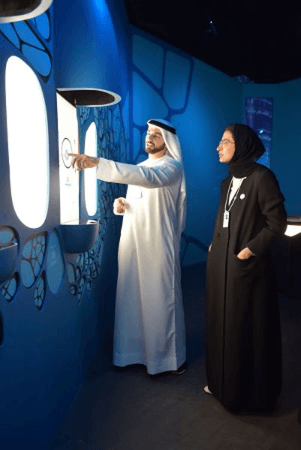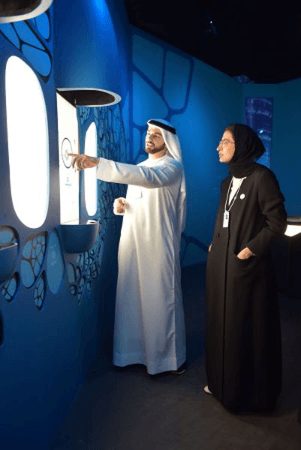Technology May Change, But the Story Remains the Same

Creating a museum of the future requires a great deal of imaginative thinking at any time. But imagine building a museum that’s all about the future when that prospect seems even more challenging to predict.
Somewhere in the creative space between near-term global challenges and long-term human-centric storytelling goals, there is just such a museum project coming to fruition in Dubai, UAE. The Museum of the Future, which for the past five years hosted a series of immersive temporary exhibitions for the World Global Summit, is constructing its permanent home, set to open in 2021.

Currently under construction in Dubai, UAE, the Museum of the Future will combine elements of exhibition, immersive theater, and themed attraction.
The landmark architectural venue will rely on a multitude of advanced technological systems for building management, exhibits, and visitor experience. But technology is not the entire story of the future — there is more to the narrative than just the gadgets we might use in some distant time. In fact, the central question to any future prognostication is how can the human experience be enhanced by technology?
Examining those mega questions of meaning and infrastructure for the Museum of the Future is the creative task of Sundar Raman, Director of Technology. Raman is well known in the museum exhibit design world, and he will be familiar to those who saw him speak at InfoComm Center Stage in 2018. In his former role as Director of Creative Engineering with Local Projects, he helped to create technologically enhanced exhibits for major projects such as the 9/11 Memorial Museum and the Equal Justice Initiative Museum.
Taking the Long View
Raman moved to Dubai last fall, and as the pandemic took hold this spring, we began talking about the ways that museum designs will need to accommodate long-term health and safety standards likely to emerge from the global pandemic. Several ideas continue to develop around how to create a sense of connection between museum visitors and exhibit content, with less emphasis on the ever-present tool of touch interactivity.
Beyond just the logistical challenges of touchless design and traffic flow, the fact that this is the Museum of the Future, combined with its being built in a place where innovative construction and commerce have created a new global cultural center, has made it essential that Raman and the museum’s design teams take the long view on how technology will be represented and utilized throughout the visitor experience.

The Museum of the Future builds on over five years of immersive exhibitions, such as Humans 2.0 in 2019 created for the World Government Summit.
That requires getting beyond the hardware and thinking about the narrative of a museum visit, considering how to immerse people in a story that transports them into possible futures, without weighing them down with any distracting technology decisions in the present.
This is where the Museum of the Future project gets meta. In thinking about how technology has been used throughout the past, Raman notes, “You realize that all we have been doing is augmenting human capacity — that’s what technology really is. It’s augmenting capacity.”
Communicating the Narrative Consistently
So, it follows that the narrative for the Museum of the Future needs to be driven by something beyond technology, focusing more on how human life changes and adapts around the use of the tools we create. As Raman elucidates: “It’s not, ‘How do we chase technology to keep telling a new story?’ But ‘How can we make sure that our story is consistent no matter what new technology comes up?’”
That line of thinking could apply to nearly any AV integration project. The story and content need to engage, regardless of how we consume and interact with it. And as we adopt a new vocabulary of gestures and communication in the touchless future, we need to consider not just how we’ll use technology to deliver a message, but how messages are best received and understood by humans.
In selecting devices, tools, and gestures that truly resonate with people, the story can become fully immersive, uninterrupted by confusion about how to make the technology work. That’s the goal in AV design. Every project has a storyline, our goal is to identify it and make it clear.
That’s how we can predict the future of our industry in a time of many unknowns. Stories will always need to be told, and humans have connected with narratives in consistent ways throughout time. From clay tablets to wireless tablets, the goal is the same regardless of the device — augment human capacity for communication of information and narrative. Then you are ready for any future.




